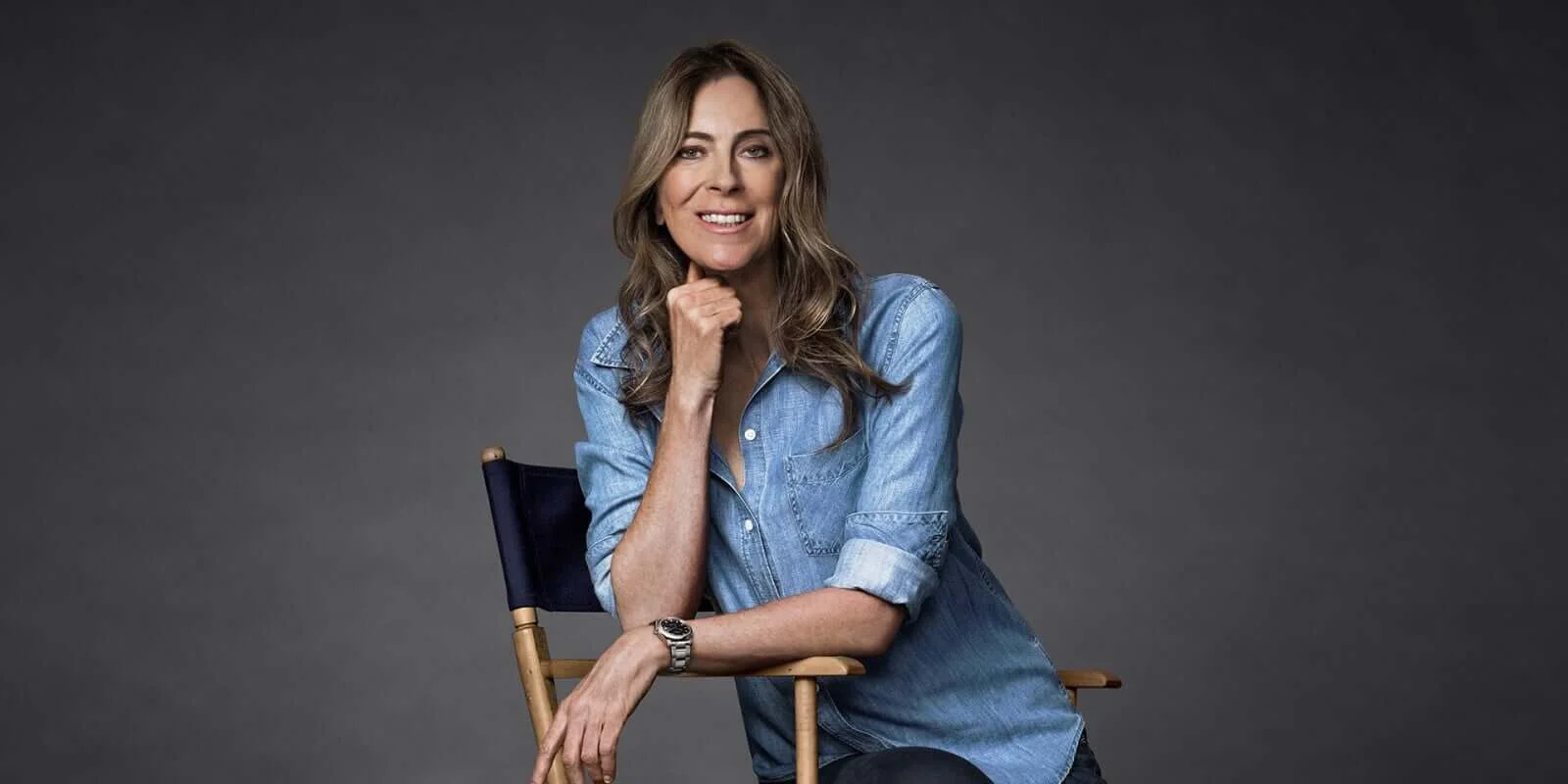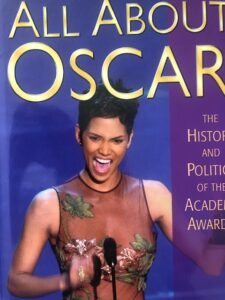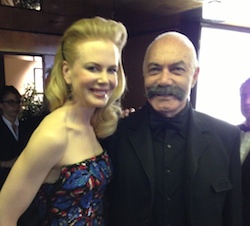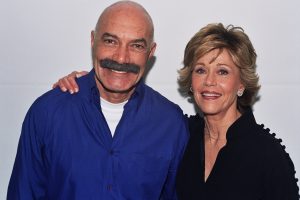August 19, 2020
My Oscar Book:
Kathryn Bigelow Career Summary:
Occupational Inheritance: No
Family: only child
Social Class: Middle class; mother librarian; father factory manager
Nationality: US
Education: Sunny Hills High School, Fullerton, California.
Training: San Francisco Art Institute, 1970; age 19; Whitney Museum of American Art’s Independent Study Program in NY; Columbia University (Graduate School)
First Film: The Loveless , 1981; age 30 (before short “The Set-Up”)
First Oscar Nomination: The Hurt Locker, 2009; age 58
First Film and First Nom: 28 years
Turning Point: Near Dark (1987)
Other Nominations: No
Genre (specialties): thriller, horror, war
Collaborators: writer Mark Boal (3 films including Oscar)
Last Film: NA
Contract:
Career Output: about 12
Career Span: 1981-oresent
Marriage: James Cameron
Politics:
Retirement: NA
Death: NA
Best Movie Directors: Kathryn Bigelow

Being the first woman to win the Best Director Oscar would be significant enough but her work before and after that win prove that she’s lavishly skilled.
Near Dark is one the best horror movies, Point Break is one of the best action movies, and those were made in her first decade as filmmaker.
With The Hurt Locker, Bigelow became the first woman to win the Best Director Oscar, the Directors Guild of America Award for Outstanding Directing, the BAFTA Award for Best Direction, and the Critics’ Choice Movie Award for Best Director.
She also became the first woman to win the Saturn Award for Best Director in 1995 for Strange Days.
Bigelow was included on the 2010 Time magazine 100 list of most influential people of the year.
Bigelow was born in San Carlos, California, the only child of Gertrude Kathryn (née Larson; 1917–1994), a librarian, and Ronald Elliot Bigelow (1915–1992), a paint factory manager. Her mother was of Norwegian descent. She attended Sunny Hills High School in Fullerton, California.
Bigelow’s early creative endeavors were as student of painting. She enrolled at San Francisco Art Institute in 1970 and received her Bachelor of Fine Arts in December 1972. While enrolled at SFAI, she was accepted into the Whitney Museum of American Art’s Independent Study Program in New York City.
Bigelow lived as an impoverished artist, staying with painter Julian Schnabel in performance artist Vito Acconci’s loft.
She had minor role in Richard Serra’s video Prisoner’s Dilemma (1974).
Bigelow teamed up with Philip Glass on real-estate venture in which they renovated distressed apartments downtown and sold them for profit.
Bigelow entered the graduate film program at Columbia University, where she studied theory and criticism and earned her master’s degree. Her professors included Vito Acconci, Sylvère Lotringer, and Susan Sontag, as well as Andrew Sarris and Edward W. Said, and she worked with the Art & Language collective and Lawrence Weiner.
She also taught at the California Institute of the Arts. While working with Art & Language Bigelow published “Not on the Development of Contradiction,” in the short-lived Art & Language magazine The Fox, and began short film, The Set-Up (1978), which was liked by director Miloš Forman, then teaching at Columbia, and which Bigelow later submitted as part of her MFA.
I ignored resistance to women making movies
“If there’s specific resistance to women making movies, I just choose to ignore that as an obstacle for two reasons: I can’t change my gender, and I refuse to stop making movies. It’s irrelevant who or what directed a movie, the important thing is that you either respond to it or you don’t. There should be more women directing; I think there’s just not the awareness that it’s really possible. It is.”— Kathryn Bigelow in 1990
Bigelow’s “The Set-Up,” a 20-minute deconstruction of screen violence, portrays “two men fighting each other as the semioticians Sylvère Lotringer and Marshall Blonsky deconstruct the images in voice-over.” Bigelow asked her actors to beat and bludgeon each other throughout the all-night shoot.
Her first feature was The Loveless (1981), a biker film co-directed with Monty Montgomery, with Willem Dafoe in his first starring role.
She then directed Near Dark (1987), which she co-scripted with Eric Red. With this film, she began her lifelong fascination with manipulating conventions and genre. The main cast included three actors who had appeared in the film Aliens.
In the same year, she directed a music video for the New Order song “Touched by the Hand of God,” a spoof of glam metal imagery.
Bigelow’s subsequent films, Blue Steel, Point Break, and Strange Days, merged her innovative strategy with market demands of mainstream filmmaking. In the process, Bigelow became recognizable as both a Hollywood brand and an auteur. All three films rethink the conventions of actioners while exploring gendered and racial politics.
Blue Steel starred Jamie Lee Curtis as a rookie police officer, stalked by a psychopathic killer, played by Ron Silver. As with Near Dark, Eric Red co-wrote the screenplay. The film, originally bankrolled for $10 million, was shot on location in New York due to financial considerations and because Bigelow doesn’t “like movies where you see a welfare apartment and it’s the size of two football fields.”
Bigelow then made cult classic Point Break (1991), which starred Keanu Reeves as an FBI agent who poses as a surfer to catch the “Ex-Presidents”, a team of surfing armed robbers led by Patrick Swayze who wear Reagan, Nixon, LBJ and Jimmy Carter masks when they hold up banks. Point Break was Bigelow’s most profitable ‘studio’ film, earning about $80 million at the global box office, and yet it remains one of her lowest rated films, both in commercial reviews and academic analysis. Critics argued that it conformed to some of the clichés of the action genre and that it abandoned much of the stylistic substance and subtext of Bigelow’s other work.
In 1993, she directed an episode of the TV series Wild Palms and appeared in one episode as Mazie Woiwode (uncredited).
I’ve spent a fair amount of time thinking about what my aptitude is, and I really think it’s to explore and push the medium. It’s not about breaking gender roles or genre traditions–Bigelow in 2009.
Bigelow’s 1995 film Strange Days was written and produced by ex-husband James Cameron. Despite some positive reviews, the film was commercial failure. Furthermore, many attributed the creative vision to Cameron, diminishing Bigelow’s perceived influence on the film.
She directed episodes of Homicide: Life on the Street in 1997 and 1998.
Based on Anita Shreve’s novel of the same name, Bigelow’s 2000 film The Weight of Water is a portrait of two women trapped in suffocating relationships.
In 2002, she directed K-19: The Widowmaker, starring Harrison Ford and Liam Neeson, about men aboard the Soviet Union’s first nuclear-powered submarine. The film fared poorly at the box office and was received with mixed reactions by critics.
Bigelow next directed The Hurt Locker, first shown at the Venice Film Festival in September 2008, and theatrically released in the US in June 2009. It qualified for the 2010 Oscars as it did not premiere in an Oscar-qualifying run in Los Angeles until mid-2009. Set in post-invasion Iraq, the film received “universal acclaim.” The film stars Jeremy Renner, Brian Geraghty and Anthony Mackie, with cameos by Guy Pearce, David Morse and Ralph Fiennes. She won the Directors Guild of America award for Outstanding Directorial Achievement in Motion Pictures (becoming the first woman to win the award) and also received a Golden Globe nomination for her direction. In 2010, she won the award for Best Director and The Hurt Locker won Best Picture at the 63rd British Academy Film Awards. She became the first woman to receive an Academy Award for Best Director for The Hurt Locker.
She was the fourth woman in history to be nominated for the honor, and only the second American woman. A competitor in the category was ex-husband James Cameron, who directed the sci-fi Avatar, which had budget of $200 million. The Hurt Locker was far less expensive to make, relying on the use of hand-held cameras, long takes, and diligent sound design.
In her acceptance speech for her Academy Award, Bigelow surprised many audience members when she didn’t mention her status as the first woman to ever receive an Oscar for Best Director. In the past, Bigelow has refused to identify herself as a “woman filmmaker” or a “feminist filmmaker.” She has been criticized for the violence in her films. Marcia Froelke Coburn wrote in the Chicago Tribune’s, “What’s a nice woman like Bigelow doing making erotic, violent vampire movies?”
Bigelow’s Zero Dark Thirty, a dramatization of American efforts to capture Osama bin Laden, was acclaimed by critics but has also attracted controversy for its allegedly pro-torture stance. She won the New York Film Critics Circle Award for Best Director, making her the first woman to win the award twice. She had already won previously for directing The Hurt Locker. She was also the first woman to receive the National Board of Review Award for Best Director.
Bigelow collaborated with Mark Boal for the third time on Detroit, set during the 1967 Detroit riots. Detroit began filming in the summer of 2016 and was released in July 2017, around the time of the 50th anniversary of the riots, and on the anniversary day of the Algiers Motel incident, depicted in the film. John Boyega, Hannah Murray, Will Poulter, Jack Reynor, Anthony Mackie, and Joseph David-Jones starred.
She served as executive producer of Triple Frontier, a film that she was originally going to direct.
In 2014, Bigelow announced plans to direct two movies: an adaptation of Anand Giridharadas’s non-fiction book The True American: Murder and Mercy in Texas starring Tom Hardy, and a feature based on the life of Bowe Bergdahl written by Mark Boal.
Film style
Bigelow is known for her shifting relationship with Hollywood and its conventional film standards and techniques. Her work “both satisfies and transcends the demands of formula to create cinema that’s ideologically complex, viscerally thrilling, and highly personal”.[36] She has had success both ascribing to conventional Hollywood cinema techniques as well as creating her own unique style that pushes against mainstream conventions. She is also known for entrenching social issues of gender, race, and politics into her work of all genres.
While her films are often categorized in the action genre, she describes her own style as an exploration of “film’s potential to be kinetic”.[37] Her frequent and notable action sequences are unique because of her use of “purpose-built” camera equipment[38] to create unique mobile shots that are very distinctive and indicative of the physicality of her work. In many of her films, such as The Hurt Locker, Point Break, and Strange Days, she has used utilized mobile and hand-held cameras.
Bigelow is most well known for is her use of extensive violence in her films. Most of her films include violent sequences and many of them revolve around the theme of violence. Violence has been a staple in her films from the beginning of her career. In her first short film The Set-Up (1978), two professors deconstruct two men beating each other up and reflect on the “fascistic appeal of screen violence”.[38] Bigelow asked the two actors, including a then unknown Gary Busey, to actually beat each other up in the film’s all-night shoot.[38] This interest in violence seeped its way into her first full-length feature film The Loveless, starring Willem Dafoe, which follows a 1950s motorcycle gang’s visit to a small town and the ensuing violence that occurs. Her next film, Near Dark, follows a young boy who falls in love with a vampire after being bitten by her. The film was originally conceived of as a Western but the genre was so unpopular at the time that Bigelow had to adjust her script and invert the genres conventions. She still used the violent staples of the genre including sieges, shoot-outs, and horseback chases. It is regarded for its combination of the Western and horror genre and its exploration of “homosexuality and ‘white America’s illusion of safety and control'”. The film became a cult classic–Bigelow herself saw a screening of it in Greenwich Village with a horror genre crowd.
Blue Steel was her first venture into the action film genre, with which she has stayed throughout her career. The film revolves around a female cop who is falsely accused of a murder and who in the process of clearing her name investigates a killing spree connected to the original murder. Similarly to Near Dark, Bigelow inverts the typical action genre conventions by placing a female protagonist at the center.[38] The film digs deeply into feminist issues and is often taught and studied by feminist film scholars.[36] Her next film Point Break, starring Keanu Reeves and Patrick Swayze, was her breakout film in terms of mainstream success. The film follows a detective who goes undercover in a suspected criminal gang of surfers who primarily rob banks. It marks the first time that Bigelow used lengthy Steadicam tracking shots. It was also her biggest financial success yet, grossing $83.5 million worldwide with a budget of $24 million.[38] Although her next film, Strange Days, which ruminates on the relationships between media, sex, race, class, and technology,[36] had a budget of $42 million, it only grossed just under $8 million.[38] Although the film flopped, it led Bigelow and her team to spend over a year developing a camera that intended to approximate human vision.[38] Sequences filmed by this camera are widely regarded as innovative and startling regardless of the film’s success.
The commercial failure of Strange Days was followed by a stream of commercial and critical flops for Bigelow. Her films The Weight of Water and K-19: The Widowmaker received negative reviews from critics and little attention from the general public. With her independently produced film The Hurt Locker she made a commercial and critical comeback. This film was her transition into political and historical film. The Hurt Locker, which follows members of a bomb squad serving in the Iraq War, was Bigelow’s first venture into pseudo-documentary style film, abandoning the aesthetic stylization found in Strange Days and Near Dark.[38] The film utilizes the genre’s tendency to use quick cuts, shaky camera, and rapid zooms. It also breaks with the conventional narrative structures of her previous films, following a more unorganized and experimental narrative structure. Her next film, Zero Dark Thirty, is widely seen as a direct extension of The Hurt Locker, going further in-depth of historical analysis and addressing issues of geopolitics and American foreign policy. The film is her most controversial to date, with heavy criticism on the depiction of the CIA’s torture practices.[38]
Bigelow is known for her tendency to go to extremes for her films. In Point Break, while filming the skydiving scene, Bigelow was on the airplane with a parachute on, as she filmed Patrick Swayze throw himself into the sky. During surfing scenes, she would either paddle on a longboard or lean over a nearby boat as far as possible to get shots of Keanu Reeves surfing. For the opening of Strange Days she controlled a crane that dropped a cameraman off the edge of a tall building. For The Hurt Locker, Bigelow filmed in Jordan in up to 130 °F (54 °C) heat.
In 1975, Bigelow published an article in the third and final issue of the Art & Language Foundation magazine The Fox entitled “Not on the Development of Contradiction.” In it, Bigelow argued that the magazine’s function was “the unintelligible manifestation of contradiction” (p. 38) and that it was connected to “a mode of socialization reproducing bourgeois-liberal thinking” (p. 39). The article quotes from writings by Jurgen Habermas and Mao Tse-Tung to substantiate this proposition.[39]
In the early 1980s, Bigelow modeled for a Gap advertisement.
Her acting credits include Lizzie Borden’s 1983 film Born in Flames as a feminist newspaper editor, and as the leader of a cowgirl gang in the 1988 music video of Martini Ranch’s “Reach,” directed by James Cameron.
Bigelow was married to director James Cameron from 1989 to 1991.
Filmography (11 features in 40 years)
1981 The Loveless Yes Yes No Directorial Debut, co-directed with Monty Montgomery
1987 Near Dark Yes Yes No Co-written with Eric Red
1990 Blue Steel Yes Yes No
1991 Point Break Yes No No
1995 Strange Days Yes No No
1996 Undertow No Yes No Co-written with Eric Red
2000 The Weight of Water Yes No No
2002 K-19: The Widowmaker Yes No Yes
2008 The Hurt Locker Yes No Yes Academy Award – Best Director, Best Picture
2012 Zero Dark Thirty Yes No Yes Academy Award – Best Picture nominee
2017 Detroit Yes No Yes
2019 Triple Frontier No No Executive











